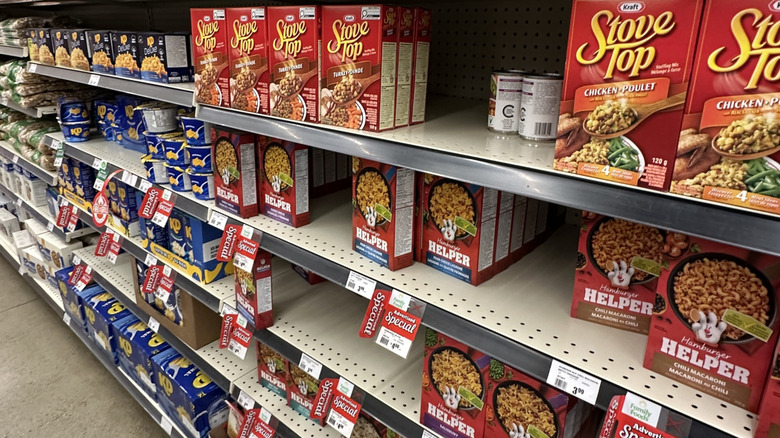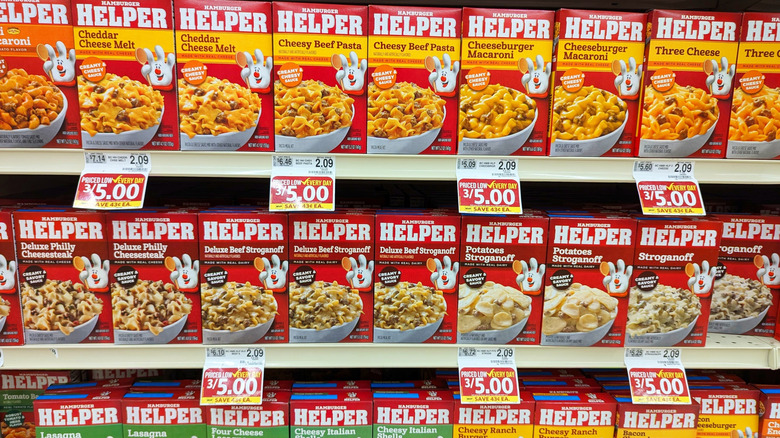The Boxed Dinner Every 1970s Family Survived On Week After Week
The history of Betty Crocker's Hamburger Helper began when it hit store shelves in December 1970. It wasn't just another pantry item — it was a lifeline. Beef prices were climbing, the economy was shaky, and families needed a way to stretch a single pound of hamburger into something that felt like a full meal. The formula was simple but revolutionary: one pan, one pound of ground beef, and one box of macaroni and seasoning. Suddenly, dinner for five didn't look so daunting. By August 1971, the first wave of flavors had arrived: Potato Stroganoff, Chili Tomato, Hash, Rice Oriental, and the ever-classic Beef Noodle.
The response was immediate. Within its first year, the mix found its way into millions of kitchens. About 27% of households nationwide purchased the product, proof that the concept had struck a nerve with busy families. For many, the bright box and cheery Betty Crocker branding became shorthand for weeknight survival. What had begun as a clever solution for families pinched by grocery costs quickly grew into one of the most recognizable dinner staples of the decade, setting the stage for a whole new era of boxed convenience foods.
The hand that saved dinner
Toward the late '70s, Hamburger Helper's momentum had started to cool. That's when General Mills gave it a new sidekick: a four-fingered, talking glove known as the "Helping Hand." The mascot showed up in TV commercials promising moms that Hamburger Helper could turn dinner into a hearty skillet meal "in a snap."
The move worked. Sales rebounded, and the hand became one of the most recognizable advertising icons of the decade. Success also encouraged some odd experiments. Earlier in the decade, in 1972, General Mills tried Tuna Helper, a seafood twist that stuck around, while a year later the company gambled on Fruit Helper, a dessert mix that quickly disappeared. The lineup kept shifting over the years, with later offshoots like Chicken, Pork, and Asian Helper rotating through grocery shelves. Some vanished quickly, but the sheer variety kept the line evolving across store aisles. Vintage memorabilia like a 1978 plush Helping Hand still pop up on eBay, proof of how deeply the brand embedded itself in '70s kitchens.
At its core, Hamburger Helper was about convenience: one-pot pasta dishes and easy skillet meals that kept families fed without fuss. That practicality remains its signature even today, though many home cooks now reach for healthier, homemade versions of Hamburger Helper in food blogs and TikTok recipes. What began as a survival tactic during tough economic times has lingered as both nostalgia and inspiration — a reminder that even a humble box can shape how America eats.

